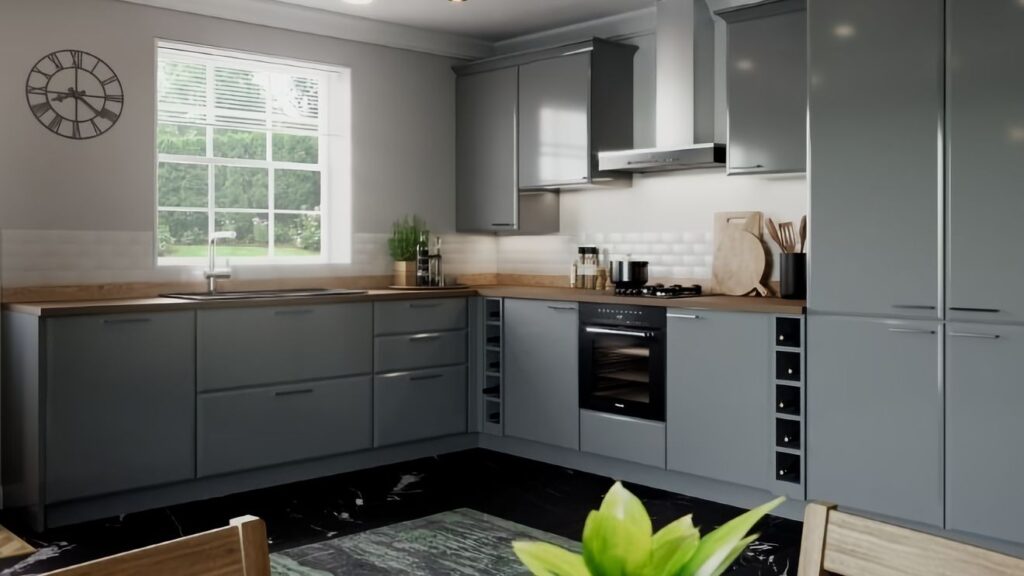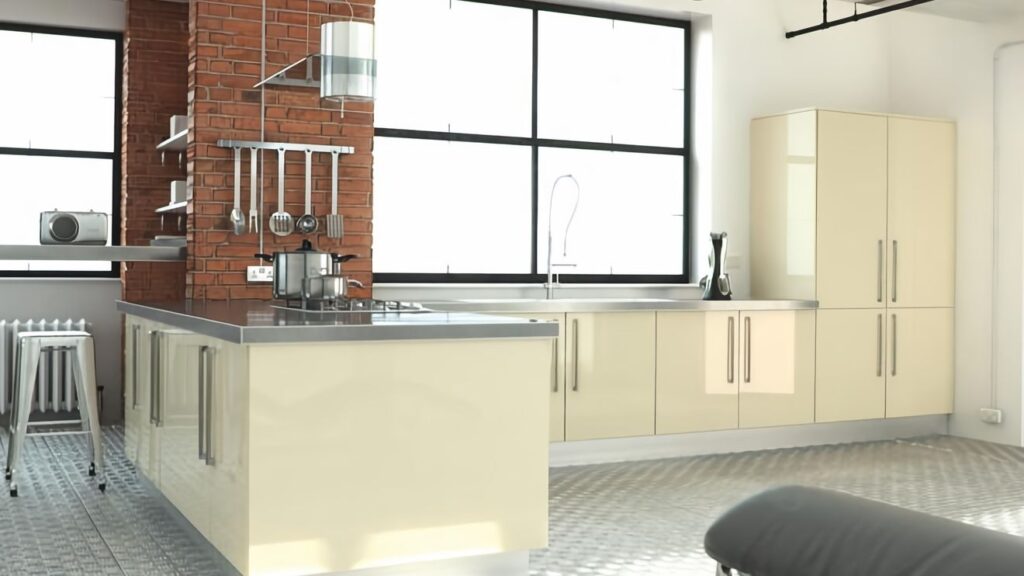Slick, gleaming gloss doors are a perennial kitchen favourite.
They're easy to keep clean, they reflect light - making them ideal for smaller rooms - and they're available in a range of colours, including vivid brights, gentle neutrals and woodgrain effect.
There's plenty to consider when choosing new kitchen doors, and even if you know you're looking for gloss doors, you need to think about the right materials, edging, cost, and so on. Below we take you through the main differences between our High Gloss doors and our Ultragloss doors. Alike in name, slightly different in nature. Read on for the lowdown on our high-shine doors...
The key difference
The key difference between these two types of smooth, shining doors is that Ultragloss doors are made from MDF with a layer of acrylic, and High Gloss doors are made from MDF and then wrapped in vinyl.
Do they look different?
A little, yes. Ultragloss doors have that mirror-like surface. They're totally smooth and look almost glassy. You could use an Ultragloss door to check your lipstick or straighten your tie, if you needed to.
High Gloss doors still gleam, but have a slightly softer shine.
Do they feel different?
Again, yes. As they have a layer of acrylic, Ultragloss doors are slightly harder to the touch. The edges of Ultragloss doors come to a 90-degree angle - they're not rounded or bevelled. What's more, you can order your Ultragloss doors with edges that match the front, or with a glass effect edge.
High Gloss doors have a layer of vinyl placed straight on to the MDF, so they don't have quite the same hardness as Ultragloss doors. The edges also have a slight bevel to them - something to consider if you've got little ones, as the edges on High Gloss doors aren't quite as angular as the ones on Ultragloss doors.
Maybe the most important thing: is there a difference in cost?
High Gloss doors tend to be slightly cheaper than Ultragloss doors, but this isn't always the case - it can depend on things like sizing so do look at a range of our gloss doors. It's also worth bearing in mind that Ultragloss doors are a little more hardwearing. But it really depends what you're looking for - Ultragloss doors are ideal for kitchens as they'll withstand daily wear-and-tear slightly better. But if you're replacing doors in your bedroom, for example, they won't be exposed to heat, steam and water. High Gloss doors will give you those attractive shining surfaces for very reasonable prices.
Quick comparison
| High Gloss | Ultragloss |
| MDF + Vinyl | MDF + Acrylic |
| Small bevel on edges | 90-degree edges |
| Edges that match front | Matching edges or glass effect edges |
| Sleek, gleaming finish | Mirror-smooth finish |
| Slightly cheaper - though not always | Slightly pricier - but do check! |
Now you're fully clued-up on the similarities and differences, why not browse our range of gleaming gloss doors? And if you've got any questions we haven't answered, give us a call or drop us an email at hello@kitchendoorworkshop.com. You can also find us on Facebook and Twitter.



